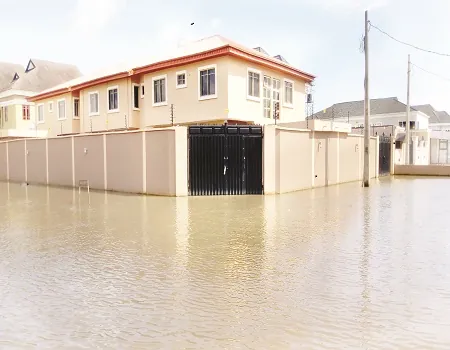There is a viral video making the rounds on social media. In the video a resident of Accra recounts how he was woken up by a tilapia swimming in the waters that had engulfed his home and as expected, those on social media were too ready to make fun, “drag and roast” as the social media lingo goes.
In their quieter times however media consumers will realize that this flooding issue, now very much and annual nuisance affects us all in one way or the other.
That road that is flooded and causes you to be late to work or miss that business appointment; those school grounds that are now inaccessible to you; that wedding or naming ceremony that gets cancelled.
One way or another we are all affected especially in our homes that are supposed to provide comfort and shelter.
This is the 2nd time I am piecing together an article on ways to flood proof your home and while the years may have changed, the tips are pretty much the same.
Some people need to undertake major structural changes, a majority of us need a few tweaks to the layout and fittings in our homes to make our homes flood proof. So why don’t we take a minute to refresh our pro list. Shall we?
Grade your lawn away from the house
Anytime you experience light rainfall, pay particular attention to the foundation area as well as the lawn. The ground should slope away from the foundation of your home.
If your lawn tilts toward your house, rainwater will pool around your home. In some cases, you may need to install drainage where water accumulates to give the water a place to go during heavy storms
Install a back flow valve
The sewage/septic system is designed to remove sewage from a house. If flood water enters the system, the sewage can backup and enter your home. To help prevent this, install a backflow valve in the sewer line.
The backflow valve is opened by the flow of sewage exiting your home, but closes when the flow reverses preventing sewage from backing up into your home. It is recommended that this work be done by a qualified, licensed contractor.
Regularly clear debris from drains
You would think this is a matter of course but actually a challenge for a few. Avoid piling leaves, mulch, or other debris in your yard where it could flush into the sewage drains or block drainage paths.
If you live in an area with lots of trees, regularly rake your yard, bag the leaves, and set them out for pick up. Check nearby drains to make sure they are clear, if not, use a rake to remove any visible blockage.
The roof of the matter
Is the matter of the roof- Don’t be confused, what I am simply saying is that, most at time we worry above flooding from ground water, yet flooding can also come through porous roofs. Call your roof expert to examine your roof for leaks or cracks and get an early fix to avoid the tick tock sound while you sleep.
If you want to also get adventurous, you can try living roofs which essentially are roofs with permeable materials such as grass and gardens.
This will allow the rainwater to drain into the soil rather than run off to pool up in the yard. The process, known as infiltration, also serves to sustain the plant life.
Keep sandbags nearby
If all fails and you are being flood-attacked, especially if you are aware that your locality is flood prone, then indeed ensure that you have sandbags handy in the compound that you can deploy in emergency situations to prevent water from coming through doorways or low windows.
Do the above and your home is flood ready.
The writer is the Executive director of Yecham Property Consult
& Founder of Ghana Green Building Summit.
Email: [email protected]
LinkedIn: Cyril Nii Ayitey Tetteh










